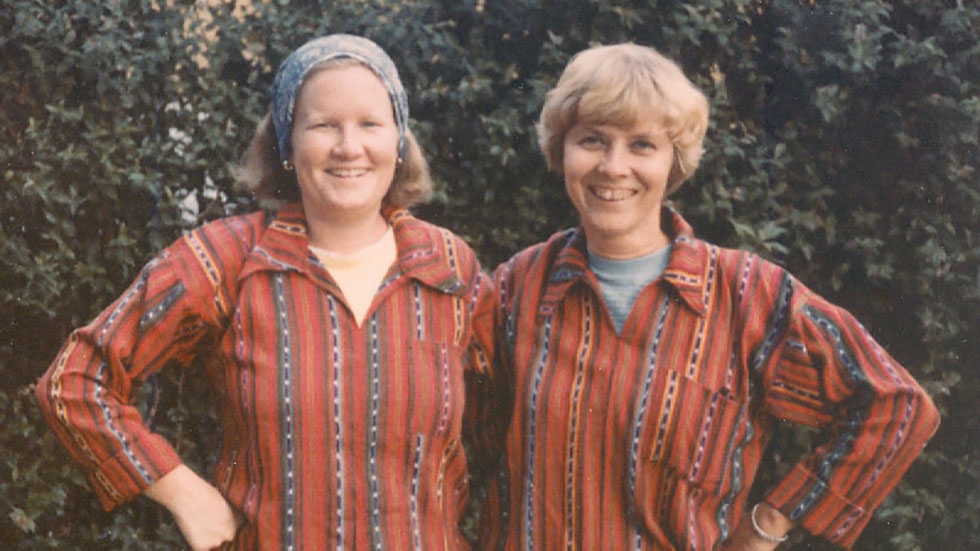Women’s Bodies
Looking through the Catholic press this week, I see images of four churchwomen whose bodies were assaulted and raped before they were murdered forty years ago. Members of El Salvador’s National Guard killed Ursuline Sister Dorothy Kazel, lay missionary Jean Donovan and Maryknoll Sisters Maura Clarke and Ita Ford on Dec. 2, 1980.

Pope Francis understands images; he touches the foot of Our Lady of Lujan after commenting briefly on the murders in his remarks this week.
Margaret Swedish in America paints soul pictures of the four women; her words make their legacy real for today’s struggles. They chose “to stay and to suffer.”
My favorite young writer of the moment, Molly Cahill, explains the threatening political context of their mission, also in America. She quotes a speech by Jeane Kirkpatrick, “soon to be Reagan’s ambassador to the United Nations, who denied that the Salvadoran military had played a role in the killings, saying, ‘The nuns were not just nuns. They were political activists.’” Not all women are on the right side of history. Think Pontius Pilate.

Le Croix International links to a lovely Weston Priory hymn, “Witnesses,” “composed in honor of the four martyrs” in 1981. Having spent meaningful time with the monks, I will only notice that gender disappears as they sing about the martyrs’ “sharing of your humanness,” though they also sing that “those who give their lives in my name will birth new hope.” The same article links to a short New York Times Retro Reports video about the killings.
Paul Baumann details the life and work of Jean Donovan in a 2018 article in Commonweal and mentions other sources, including the documentary Roses in December. His article is reprinted this week in La Croix with the only public monument I found to the four women, a mural in El Salvador.

The PBS NewsHour Wednesday night allows me to see images of women painted by someone I’ve glanced at for years but whose work leapt out brilliantly from the TV: Artemisia Gentileschi. An artist in the 1600s, the height of the European Renaissance, Gentileschi claims her place at 16 or 17, when she paints her first “Susanna and the Elders.” She does not avoid the beauty of Susanna’s face and body in her resistance to the men seeking to rape her. Men with status. Curator Letizia Treves of London’s National Gallery explains that Gentileschi herself later was raped by a man she was to marry; the court records are dramatic. The many images she paints of Susanna and Judith, especially, are sometimes seen as revenge. But I return to the innocent resistance of the earliest painting. A woman’s beautiful body is not to be taken.
Then I think about churchmen since Paul VI arguing that women do not bear a physical resemblance to Jesus in his humanity, and I rejoice in WOC’s 45th anniversary.
Women are martyred.
Women resist.
Ordain women. Women are a monument to Jesus in his humanity.

3 Responses
About Adam’s rib:
https://www.youtube.com/watch?v=j147Kd_JDhw&feature=emb_logo
See also:
http://www.vatican.va/content/john-paul-ii/en/audiences/1979/documents/hf_jp-ii_aud_19791107.html
Thank you for reminding us of these extraordinary women, role models, yes, but so much more to all of us who work for justice and peace everywhere, not only within the church. They are to be forever honored for their sacrifice and their unbounded courage. We see them living in other women – in all genders really – continuing their mission today.
Thanks, Regina, for posting this. It seems particularly fitting to honor these courageous women as we celebrate one of Mary’s great feasts. Though it is often confused, the Immaculate Conception doesn’t celebrate Mary brave choice at the Annunciation, but her own conception without sin. It is-interesting that that Annunciation day, showing a more active Mary, is not elevated to a Holy Day of Obligation! Have these women been honored with canonization? Is sainthood assumed to be won by martyrs, who die in their service of the Church and its people? These holy, happy women certainly deserve more recognition than they usually receive.